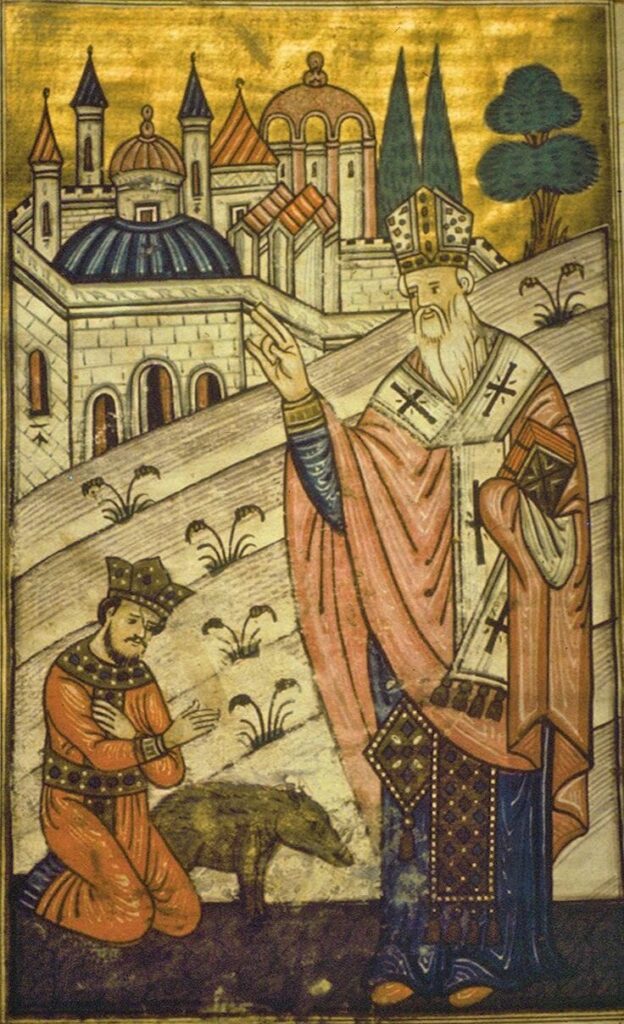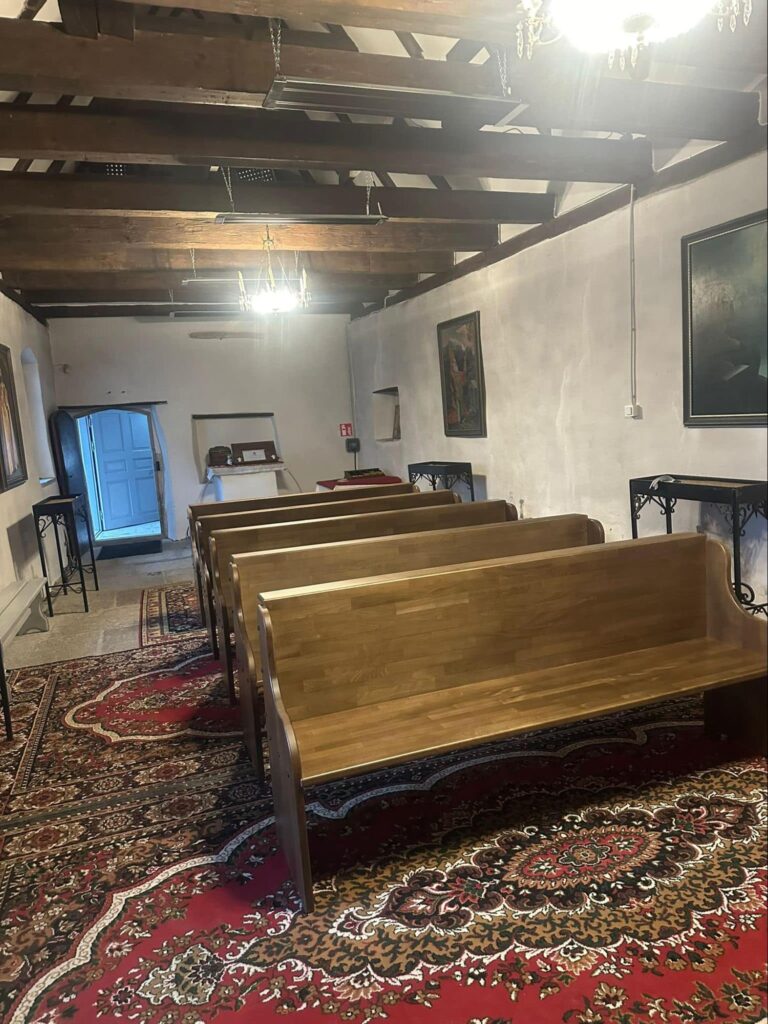History of the Church
Unlike other Armenian churches of the diaspora, this church was not initially built as an Armenian church. Previously, the building was the Lutheran Church of Saint John, which officially became an almshouse in 1813. The first stone church was built on this site in the first half of the 13th century. In 1237, it is mentioned as the Saint John’s Almshouse, which served victims of leprosy brought here by the crusaders. The almshouse was presumably founded by the bishop of Tallinn and was subordinate to the Tallinn Town Hall.
In written sources from 1363, it is mentioned that the twelfth bishop granted forgiveness of sins to those who made donations to the almshouse and prayed in its chapel. The church was small and without a vault. It also included a residential house, a barn, and a bathhouse, which were later demolished. In 1449, the church was re-consecrated along with the adjacent cemetery by Bishop Heinrich of Tallinn. In the early 15th century, after extensive works carried out in the 14th century, the condition of the church was relatively good. The church was destroyed in 1570 during the Livonian War, and restoration began in 1648 when the tower was built. The church was not significantly damaged during the Great Northern War. Major construction work took place in 1724: the building was expanded and a new tower was built. The interior of the church was enhanced, and a second, intricately decorated bell was hung in the tower, which has been preserved to this day.
For five decades during Soviet rule, the church was used as a warehouse. In 1999, the building was listed in the State Register of Cultural Monuments of Estonia. In recent decades, the area around the centuries-old church has been transformed into a high-rise district, making the church building stand out sharply against its surroundings.

Exterior

The one-story building is made of limestone and plastered. It has a trapezoidal main plan and faces the beginning of Tartu Road with its long side. The baroque-style lantern tower and the church’s slopes are wooden and horizontally clad. The front façade has a portal with a round arch. The building’s gable roof is covered with ceramic tiles. The interior dimensions of the building are: length — 14.8 m, width to the northwest — 4.15 m, to the southeast — 5.6 m. During an inspection on April 17, 2020, the building’s condition was assessed as poor.
Interior
The church houses copies of images of saints of the Armenian Apostolic Church, such as the Holy Virgin Mary, Saint Gregory the Illuminator, Saint Mesrop Mashtots, Saint Sarkis, and Jesus Christ. Copies of Armenian originals were made by the famous artist Sergey Minin.
History of the Armenian Church Community in Estonia
Armenians first began to settle in the territory of present-day Estonia in the mid-19th century. Today, their number is about 1500 people, the overwhelming majority of whom live in the capital, Tallinn, where the Armenian Apostolic Church of Saint Gregory the Illuminator was established. The church was registered as an Armenian Apostolic Church on November 11, 1993, and has since been used by the Estonian community of Saint Gregory. The local Armenian community received this building under an agreement with the Lutheran Church of Estonia, headed by Kuno Pajula, according to which the exterior of the church remained unchanged, while the interior was modified to resemble a typical Armenian church with all the necessary attributes. Significant work in transferring the church to the Armenian community was carried out by Suren Sahakyan and Vanush Karapetyan. After the registration of the Armenian church community, a church council was elected to coordinate the parishioners’ efforts in improving the church. The church was restored in 2000-2001. Significant contributions to this work were made by the church elder, Karen Ter-Ovanesyan. The restored church and khachkar were consecrated by Bishop Yezras and Bishop Arakel from Armenia.

